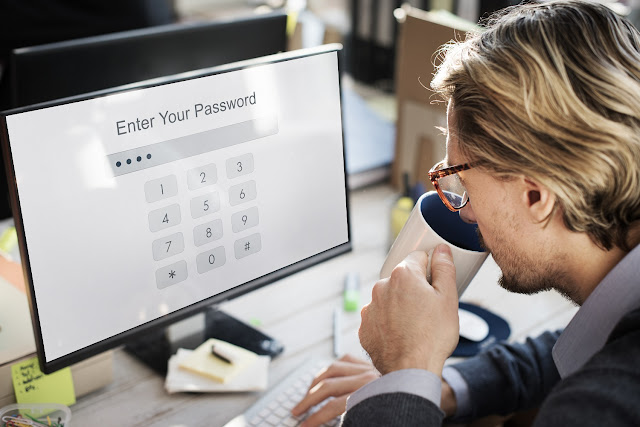Introduction to Password-Free Login
As technology continues to evolve, so do the ways we approach online security and user convenience. One standout innovation leading this change is password-free login—a method that lets users access accounts without the hassle of remembering traditional passwords. Beyond its user-friendly appeal, this shift has the potential to seriously curb fraud and tighten digital security. In this post, we’ll explore why password-free login is gaining traction and how it can elevate both the user experience and data protection for companies like Blink LLC.
The Rise of Password-Free Login
Passwords have long been the go-to for digital security, but they come with plenty of downsides—think forgotten credentials, hacks, and data breaches. That’s why many businesses are rethinking authentication, and password-free login is proving to be a solid alternative.
By using tools like biometrics, one-time passcodes (OTPs), and secure verification via email or SMS, these systems ditch the need for traditional passwords altogether. This modern approach doesn’t just streamline login—it helps tackle the growing threats of cybercrime and information theft.
Key Benefits of Password-Free Login
1. Improved User Experience
At its core, password-free login simplifies how users get into their accounts. It removes the stress of recalling complex passwords—a common barrier to quick access.
Faster Access: Whether it’s a fingerprint scan, a one-click verification link, or a code sent to your phone, logging in becomes quicker and more intuitive. This smooth process cuts out unnecessary steps and speeds things up significantly.
Convenience: Let’s face it—keeping track of dozens of passwords gets tiring. By moving away from password dependency, users can access various services more easily, without the constant juggling of login info.
2. Enhanced Security
While passwords have served us for decades, they’re increasingly vulnerable. Hackers have found countless ways to exploit password-based systems. Password-free options, however, are much harder to break into.
Reduced Risk of Phishing: Since users aren’t typing passwords into potentially fake fields, the threat of phishing attacks drops dramatically.
Biometric Protection: Fingerprints, facial recognition, and even iris scans offer security that’s incredibly tough to fake, adding a strong layer of defense.
Secure One-Time Codes: OTPs expire after just a short window of time. Even if intercepted, they’re essentially useless, which makes unauthorized access far less likely.
3. Reduced Fraud and Data Breaches
Fraud and data theft remain top concerns for both businesses and consumers. Password-free login helps curb these threats by eliminating password-based weaknesses.
No Passwords to Steal: Without stored passwords, hackers have nothing to target. This alone slashes the risk of breaches significantly.
Stronger Authentication: Techniques like biometrics and OTPs are tied to specific individuals, making it much harder for anyone to impersonate users or hijack accounts.
4. Better Compliance with Security Regulations
As regulations tighten around digital data, companies need ways to stay compliant. Password-free systems can make meeting these requirements easier.
GDPR Compliance: Using more secure authentication methods strengthens data protection and helps businesses align with privacy laws.
PCI DSS Alignment: For payment processors and online vendors, minimizing sensitive data storage (like passwords) reduces liability and exposure to fraud.
5. Lower Administrative Costs
Managing passwords can be surprisingly expensive. From frequent reset requests to backend maintenance, it eats into IT resources.
- Fewer Support Calls: One of the most common IT issues? Forgotten passwords. Eliminating them frees up support teams for other tasks.
- Reduced Overhead: Systems that use biometrics or verification links generally require less upkeep, which can lead to long-term cost savings.
How Password-Free Login Works
There’s no one-size-fits-all method here. Different password-free technologies cater to different needs, but they all share one goal: secure, seamless access.
1. Biometric Authentication
Fingerprints, facial scans, and retina recognition are becoming standard in many password-free setups. These identifiers are unique to each user, making them both secure and easy to use.
2. One-Time Passcodes (OTPs)
These short-lived codes are sent to a registered device or email and expire quickly, adding a layer of security that static passwords simply can’t offer.
3. Email or SMS Links
Instead of entering a password, users receive a direct login link. Clicking the link verifies their identity, providing access without a single password.
Implementation of Password-Free Login for Online Businesses
For companies operating online, adopting password-free login is a smart way to enhance user trust and system security. Here’s how businesses like Blink LLC can roll it out:
- Offer Flexible Options: Users appreciate the choice. Supporting biometrics, OTPs, and login links lets them pick the method that fits their habits best.
- Use What You’ve Got: Many password-free tools integrate smoothly into existing systems, whether you're running an e-commerce store, SaaS platform, or subscription service.
- Show the Value: New methods can feel unfamiliar. By clearly explaining how these systems work—and how they keep data safer—users are more likely to embrace them.
Conclusion: Embrace the Future of Authentication
Password-free login is more than just a trend—it’s a meaningful step toward safer, smoother digital experiences. It solves many of the problems that have plagued traditional login systems, offering better security and easier access. For forward-thinking companies like Blink LLC, adopting password-free solutions could be the key to reducing fraud, cutting IT costs, and keeping customers happy. As the digital world keeps advancing, businesses that embrace this change will be better positioned for what’s next.


Comments
Post a Comment